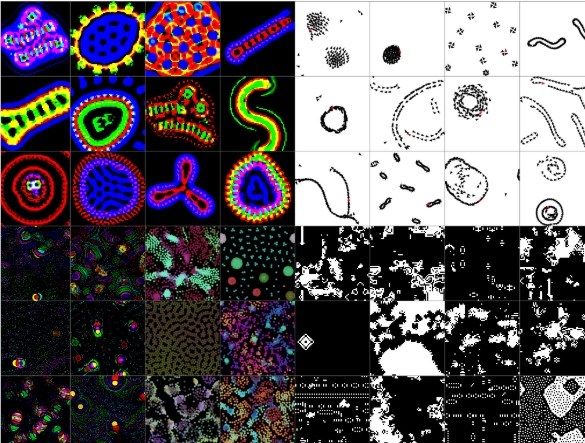In recent years, with significant breakthroughs in protein discovery that have won Nobel Prizes, foundational models (FMs) have gradually shown their potential in exploring large combinatorial spaces, indicating that multiple scientific fields may undergo transformations. Nevertheless, the field of artificial life (ALife) has yet to fully leverage these foundational models, presenting a tremendous opportunity for development in this area.
To address this, the research team has introduced a method called "Artificial Life Automated Search" (ASAL), which utilizes visual language foundational models to effectively alleviate the long-standing reliance on manual design and trial-and-error in the field of artificial life.

The core functionalities of the ASAL method include: first, the ability to seek simulations that produce specific phenomena; second, the capability to discover simulations that exhibit open-ended novelty over time; and finally, it can comprehensively showcase a variety of interesting and diverse simulation spaces. The versatility of this method allows it to be effectively applied to various substrates of artificial life, including "flocking behavior" (Boids), "particle life" (Particle Life), "Game of Life," "Lenia," and "neural cellular automata," among others.
Research results indicate that the ASAL method successfully discovered previously unseen forms of life such as Lenia and Boids, as well as open-ended cellular automata similar to Conway's Game of Life. Additionally, the application of foundational models has made it possible to quantify phenomena that were previously only qualitatively assessed. This new research paradigm is expected to transcend human creativity and accelerate advancements in artificial life research.
The study also provides a simplified implementation of ASAL, allowing researchers to get started quickly. The code implementation utilizes the Jax framework, featuring end-to-end rapid processing capabilities, with key components including the creation of foundational models, substrates, effective unfolding of simulations, and computation of ASAL metrics. The research team has implemented various artificial life substrates, and users can run the provided code to evaluate the openness of the simulations.
For researchers looking to run the project locally, it is recommended to first clone the repository, set up a Python environment, and install the relevant dependencies. Additionally, the research team has made a usable Notebook available on the Google Colab platform to facilitate quick onboarding for users.
Project link: https://github.com/sakanaai/asal
Key points:
🌟 The research team proposed the "Artificial Life Automated Search" (ASAL) method, utilizing foundational models to reduce the burden of traditional design.
🔍 ASAL can discover simulations of specific phenomena, open-ended novelty simulations, and showcase diverse simulation spaces.
🚀 The research findings successfully identified new life forms and quantified previously qualitative phenomena, advancing the field of artificial life research.
